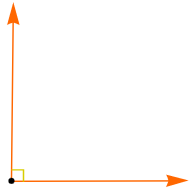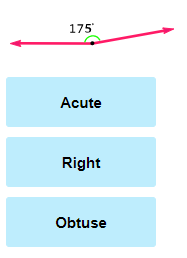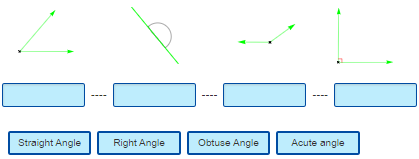
Obtuse, Acute and Right Angles
Concept
Angles can be classified according to the size of the angle.
Angles are formed by two rays that have the same endpoint.
Rules
Example
Solution
1. If the angle measures greater than 0°, but less than 90° it is an acute angle.
2. If the angle measures 90° it is a right-angle.
3. If the angle measures greater than 90°, but less than 180° it is an obtuse angle.
4. The measurement of this angle is 90°, so it is a right-angle.
Answer: This is a right angle.
Practice Obtuse, Acute and Right Angles

Angle – a figure formed by two rays, sharing a common endpoint, called the vertex of the angle.
Vertex – is the point where two rays of an angle meet.
Right Angle – An angle that measures exactly 90°
Acute Angle – An angle that measures less than 90°
Obtuse Angle – An angle that measures greater than 90° but less than 180°
Straight Angle – An angle that measures exactly 180°
Reflex Angle – angles measuring greater than 180 degrees and less than 360 degrees. The measure of a reflex angle is added to an acute or obtuse angle to make a full 360-degree circle.
Pre-requisite Skills
Measuring Angles
Drawing Angles
Estimating Angles







